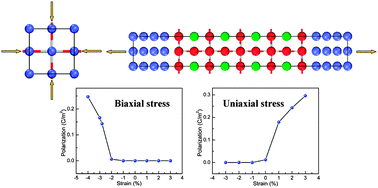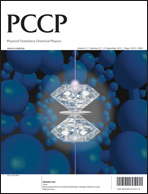Strain driven enhancement of ferroelectricity and magnetoelectric effect in multiferroic tunnel junction
Abstract
The strain effect on the ferroelectric and magnetoelectric coupling in multiferroic tunnel junction (MFTJ) Co/BaTiO3/Co has been investigated systematically by using first-principles calculations within density functional theory. It is found that both in-plane compressive strain and uniaxial tensile strain lead to the enhancement of ferroelectric polarization stability and intensity of magnetoelectric coupling in the MFTJ. There is a transition from the paraelectric phase to the ferroelectric phase for the BaTiO3 layer in MFTJ when the loaded in-plane compressive strain increases up to −2.8% and the corresponding average ferroelectric polarization is about 0.13 C m−2. Meanwhile, the calculated surface magnetoelectric coefficients increase with increasing in-plane compressive strain. Similar phenomena have been also observed in the case of uniaxial tensile strain implemented in MFTJ. The results suggest that the ferroelectric polarization and magnetoelectric coupling in multiferroic tunnel junctions can be controlled by strain and we expect that this study can provide a theoretical basis for the design of spintronic devices.


 Please wait while we load your content...
Please wait while we load your content...